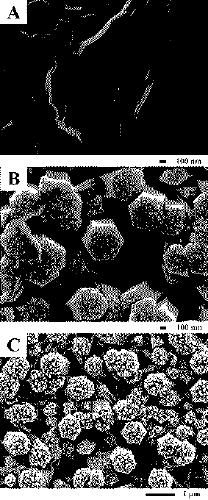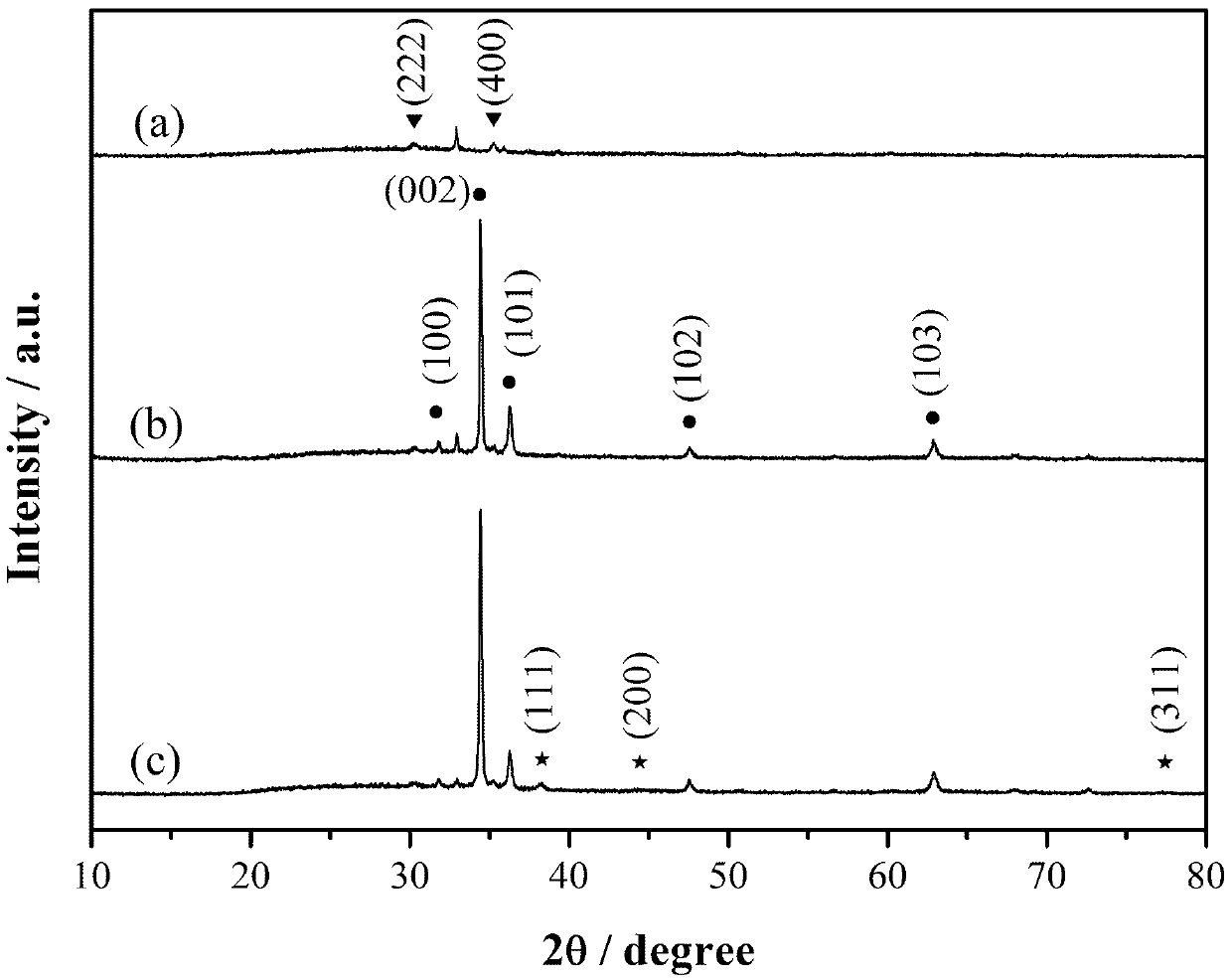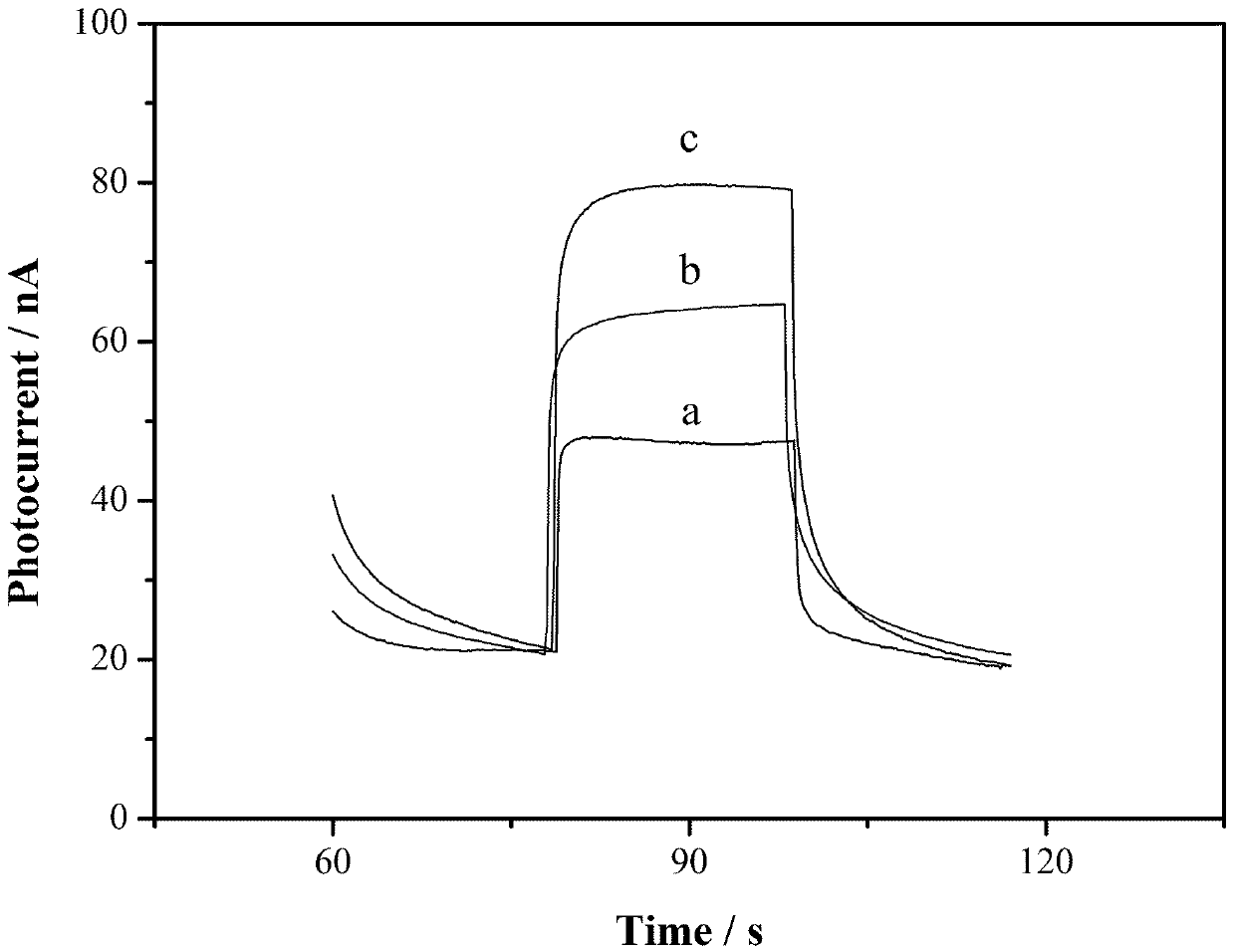Construction and application of aptamer sensor taking nanogold/zinc oxide-graphene composite material as photoelectric sensitive element
An aptamer sensor and composite material technology, which is applied in the direction of material electrochemical variables, material analysis, and material analysis through electromagnetic means, can solve the problems of complex sample pretreatment process, difficult to achieve rapid detection, and high detection cost, and achieve Good stability and sensitivity, convenient operation and simple preparation process
- Summary
- Abstract
- Description
- Claims
- Application Information
AI Technical Summary
Problems solved by technology
Method used
Image
Examples
Embodiment 1
[0031] A method for constructing a photoelectrochemical aptasensor using nano-gold / zinc oxide-reduced graphene oxide ternary composite material as a photosensitive element, comprising the steps of:
[0032] (1) Preparation of photoelectrodes:
[0033] (1.1) Preparation of modified electrode rGO / ITO:
[0034]The ITO conductive glass was immersed in acetone, ethanol and ultrapure water for 30 min, and the high-purity nitrogen was purged and dried for later use; the ITO conductive glass was immersed in 0.2 mg / mL graphene oxide (GO) aqueous solution, and deposited by constant current method, the current density is 0.25 mA / cm 2 , the deposition time was 100 s, and the electrode rGO / ITO with uniform loading of reduced graphene oxide (rGO) was prepared;
[0035] (1.2) Preparation of modified electrode ZnO-rGO / ITO:
[0036] Immerse rGO / ITO in 0.02 mol / L Zn(NO 3 ) 2 The modified electrode ZnO-rGO / ITO with uniform loading of ZnO nanorods was prepared by constant potential depositio...
Embodiment 2
[0049] Monitoring the assembly process of aptasensor by current-time curve method
[0050] Figure 6 In order to adopt a four-electrode detection system, the photoelectric response curves of different modified electrodes were tested with a phosphate buffer solution containing 0.1 mol / L DA as the electrolyte. Curves a to e represent the modified electrodes ZnO-rGO / ITO, ZnO-rGO / ITO, Photoelectric response curves of Au / ZnO-rGO / ITO, S1 / Au / ZnO-rGO / ITO, S2 / S1 / Au / ZnO-rGO / ITO and MB / S2 / S1 / Au / ZnO-rGO / ITO, ZnO- After rGO / ITO deposits Au nanoparticles (Au / ZnO-rGO / ITO), the photocurrent increases significantly, and the good conductivity and local surface plasmon resonance effect of Au nanoparticles promote the separation of photogenerated electron-hole pairs. and electron transfer. When Au / ZnO-rGO / ITO surface self-assembled aptamer S1 (S1 / Au / ZnO-rGO / ITO), its photocurrent decreased significantly, and the negatively charged oligonucleotide sequence hindered the transfer of electrons, At...
Embodiment 3
[0052] An application of a photoelectrochemical aptasensor using nano-gold / zinc oxide-reduced graphene oxide ternary composite material as a photosensitive element, comprising the following steps:
[0053] 20 μL of different concentrations of Cd(II) solutions were incubated on the surface of the photoelectrochemical aptasensor MB / S2 / S1 / Au / ZnO-rGO / ITO in Example 1, and incubated at room temperature and humidity for 1 h. A four-electrode detection system was used to test the photocurrent of the sensor after incubation with Cd(II), and a linear regression equation was constructed according to the relationship between the concentration of Cd(II) and the photocurrent response. Figure 7 (A) is the incubation concentration of sensors MB / S2 / S1 / Au / ZnO-rGO / ITO in Example 1 of the present invention is 5.0×10 -12 , 6.0×10 -11 , 3.0×10 -10 , 1.0×10 -9 , 6.0×10 -9 , 2.0×10 -8 Photocurrent response curves after Cd(II) in mol / L (curves a to f), (B) is the linear regression graph of Cd(I...
PUM
 Login to View More
Login to View More Abstract
Description
Claims
Application Information
 Login to View More
Login to View More - R&D
- Intellectual Property
- Life Sciences
- Materials
- Tech Scout
- Unparalleled Data Quality
- Higher Quality Content
- 60% Fewer Hallucinations
Browse by: Latest US Patents, China's latest patents, Technical Efficacy Thesaurus, Application Domain, Technology Topic, Popular Technical Reports.
© 2025 PatSnap. All rights reserved.Legal|Privacy policy|Modern Slavery Act Transparency Statement|Sitemap|About US| Contact US: help@patsnap.com



